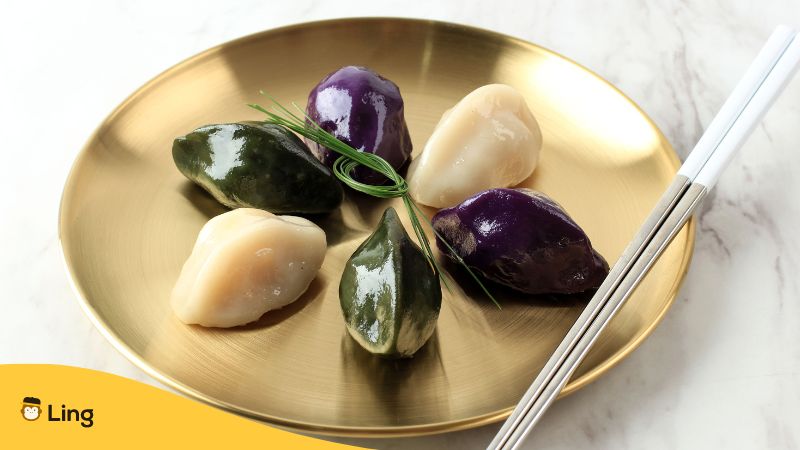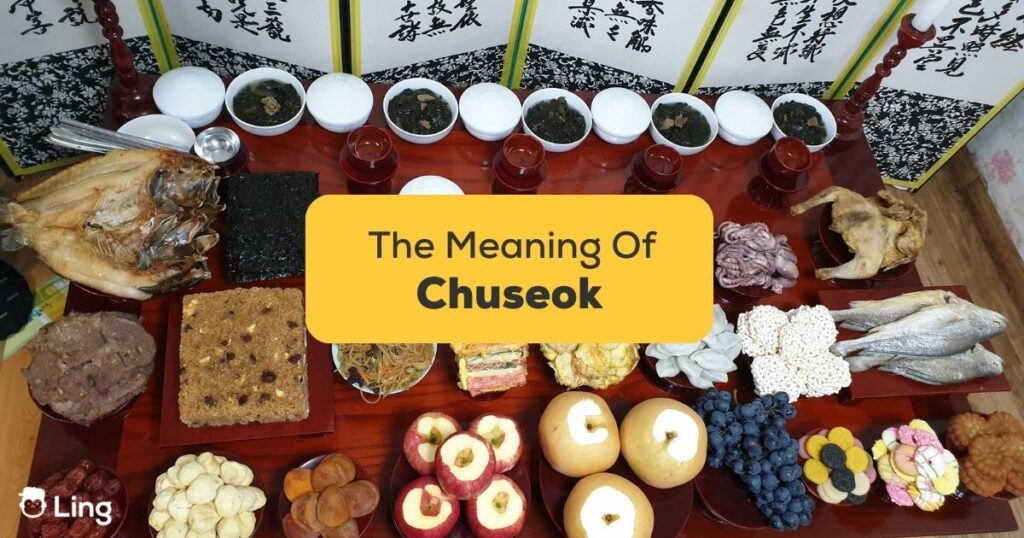If you’re wondering whether or not Korea celebrates Thanksgiving, you have to find out more about the meaning of Chuseok. According to the locals, it’s one of the biggest holidays in South Korea, which is the people’s way to gather and celebrate a plentiful harvest. Let’s find out more about the celebration and traditional holiday known as Korean Thanksgiving Day. This may inspire you to learn Korean faster so you can book a flight in time for the next Chuseok.
The Meaning Of Chuseok
Chuseok (추석), also called Hangawi (한가위), is more than a Korean Thanksgiving Day. Actually, it’s Thanksgiving, Christmas, and New Year’s all rolled into one. It’s a three-day Korean holiday that begins on the 15th day of the 8th month according to the lunar calendar (September on the Gregorian calendar).
Why Do They Celebrate Chuseok?
Locals celebrate Chuseok to pay tribute to their ancestors and express gratitude for a bountiful harvest. This festival is more than eating tasty songpyeon (rice cakes) or playing games like ssireum (traditional Korean wrestling). Koreans use this as a chance for families to gather and visit their ancestral hometowns to pay respects to the graves of their ancestors.
Family members gather on a full harvest moon and feast on freshly harvested rice and delicious food. They perform traditional Korean rituals, such as traditional folk dance and Korean circle dance. South Koreans celebrate Chuseok with gift-giving, folk games, and hoards of other festivities.
Is Chuseok The Same With Chinese New Year?
Chuseok is among the most important holidays in Korea, along with Lunar New Year or Seollal. It’s not Chinese New Year since it originated from Korea’s agricultural history. Before Chuseok, locals celebrated Gabae, an ancient harvest festival during the Three Kingdoms era. It evolved into Chuseok through the years, a celebration incorporating elements of shamanism and Confucianism, which later became what it is today – a holiday closely similar to Thanksgiving.

A Look Into The Chuseok Traditions
While Thanksgiving in the United States centers around the Pilgrims and Native Americans sharing a meal, Chuseok gives praise to the hard work of farmers and provides a moment to pause and appreciate the fruits of their labor. It’s a time when Koreans come together, not just as families but as a nation, to express gratitude for the harvest season.
Preparations And Rituals
Chuseok isn’t just a one-day event. Locals have a line-up of connected activities and preparations leading up to the big day. They do special rituals like Charye (ancestral rites) during the celebration. Family gatherings also include preparing traditional delicacies that symbolize the day when the harvest moon appeared. During this time, the hosts also prepare games for everyone to enjoy in the coming day.
Food And Feasting
The Chuseok holiday wouldn’t be complete without food. Aside from songpyeon, Chuseok tables are filled with food, bright and beautiful (I mean, colorful and delish!). Korean families share meals during the celebration as a symbol of unity and prosperity. These foods include traditional dishes like jeon (Korean pancakes) and japchae (stir-fried noodles).

Songpyeon (송편)
If you are lucky enough to visit Korea during Chuseok, make sure that you taste this flavorful rice cake. This traditional Korean food is made from rice flour filled with sesame seeds, red bean paste, chestnuts, and secret spices. They are shaped like half-moon and steamed with pine needles. Families prepare them the evening before the Thanksgiving celebration and believe that anyone who made perfectly-shaped rice cakes will have a happy marriage or become parents to a beautiful child.
Jeon (전)
This Chuseok favorite dinner dish is made from veggies, such as zucchini and sweet potato, mixed with mashed fish and coated with egg and flour.
Japchae (잡채)
Since we’re talking about the day for harvests, it’s a no-brainer why the locals severe Japchae! The noodles, mixed with veggies like carrot, spinach, onion, and mushrooms, are stir-fried in cooking oil and added with soy sauce and beef.
Ancestral Memorial Ceremony
Chuseok’s core revolves around the entire family honoring ancestors. They visit ancestral graves to perform Charye and Seongmyo, paying respects to those who came before them. It’s a reminder of the importance of family roots.
Unity And Family Bonds
Chuseok isn’t just about the physical act of coming together; it’s about forging deeper connections. Families gather, generation after generation, reinforcing bonds that withstand the test of time.
Chuseok Vocabulary
Here are some Korean phrases you can flex to impress your friends or family during Chuseok, or use as a conversation starter with the locals.
Here’s a list of more words and phrases you can use to learn Korean faster:
| English | Korean (Hangul) | Korean Pronunciation |
| Chuseok | 추석 | Choo-seok |
| Lunar Calendar | 음력 | Eum-lyeok |
| Ancestral Rites | 차례 | Cha-rye |
| Incense | 향 | Hyang |
| Family | 가족 | Ga-jok |
| Harvest | 수확 | Su-hwak |
| Traditional Clothing | 전통 의상 | Jeon-tong ui-sang |
| Songpyeon Making | 송편 만들기 | Song-pyeon man-deul-gi |
| Ancestor Worship | 조상 예배 | Jo-sang ye-bae |
| Autumn | 가을 | Ga-eul |
Chuseok Phrases
Want to impress the locals? Here are the common Korean phrases related to this topic.
1. What are you going to do for Chuseok this year? 올해 추석에 뭐 할 거에요? (Olhae Chuseoge mwo hal geoeyo?)
2. I wore a hanbok and went to see the autumn leaves with my family. 한복을 입고 가족과 함께 가을 단풍을 구경하러 갔어요. (Hanbogeul ipgo gajokgwa hamkke gaeul danpungeul gugyeonghareo gasseoyo.)
3. Will you help me make songpyeon? 송편 만드는 거 도와 줄래? (Songpyeon mandeuneun geo dowa jullae?)
4. This bouquet of flowers was a gift that I took to my grandmother’s. 이 꽃다발은 할머니께서 선물로 가져 갔어요. (I kkotdabal-eun halmeonnikkeso seonmullo gajyeo gass-eoyo.)
5. Our family observes the ancestral rites. 우리 가족은 차례를 지켜요. (Uri gajog-eun chalyeleul jik-eoyo.)
6. We pay our respects to our ancestors by burning incense. 향을 피우며 조상들께 경의를 표해요. (Hyang-eul pi-umyeo josangdeulkk-e gyeong-uileul pyohae-yo.)
Celebrating Chuseok By Improving Your Korean With Ling
So, you’re all pumped up about Chuseok and want to immerse yourself fully in the vibrant Korean culture? Great! But before you pack your bags, remember that you also need to master a few Korean expressions. You see, learning a few Korean phrases can go a long way, but it’s not only “a few” you’d learn using the Ling app.
Ling is a fantastic mobile application available for both Android users on the Play Store and Apple aficionados on the App Store. It’s designed to make learning Korean an absolute breeze and, dare I say, even fun!


































































